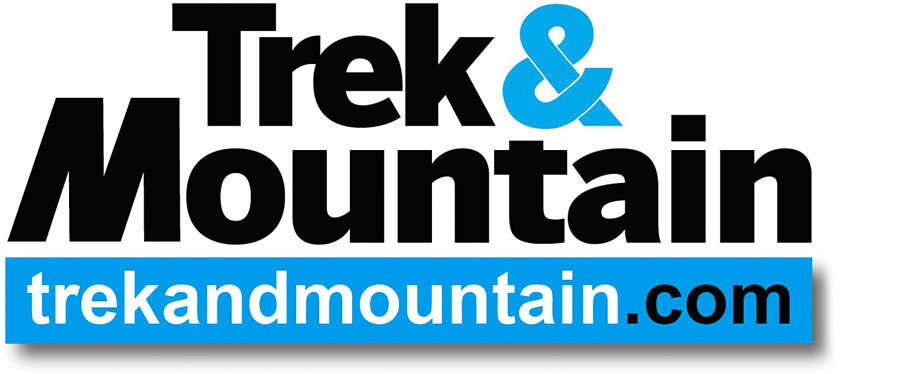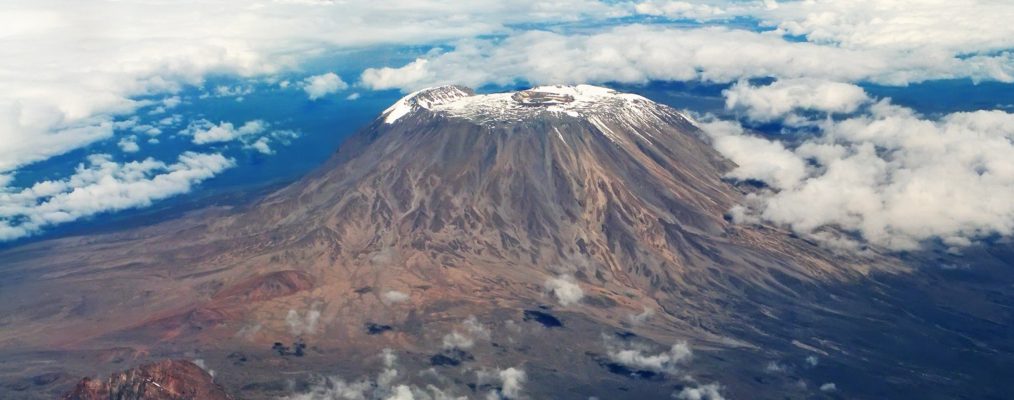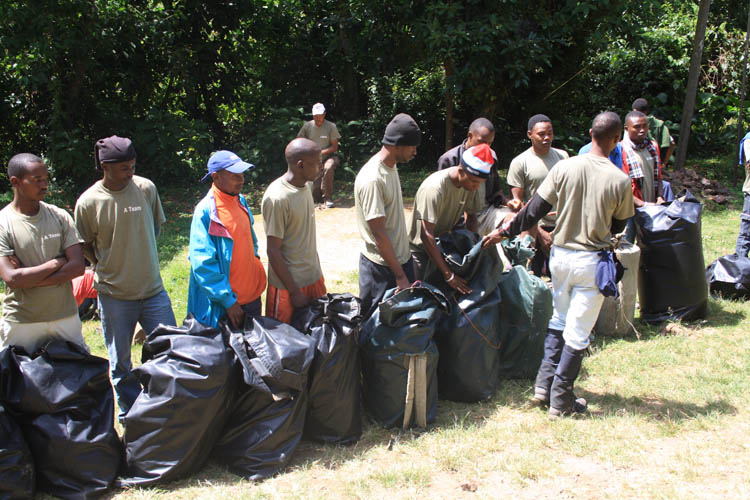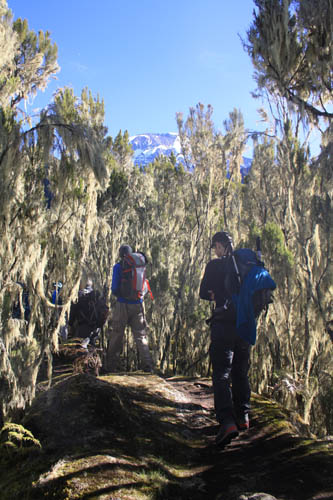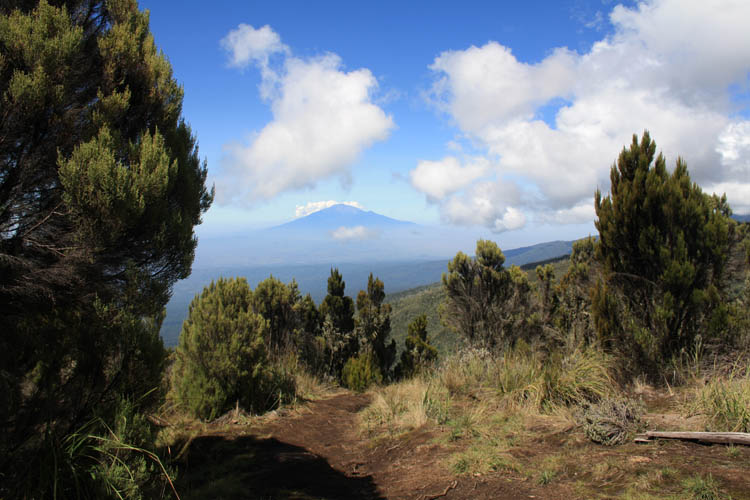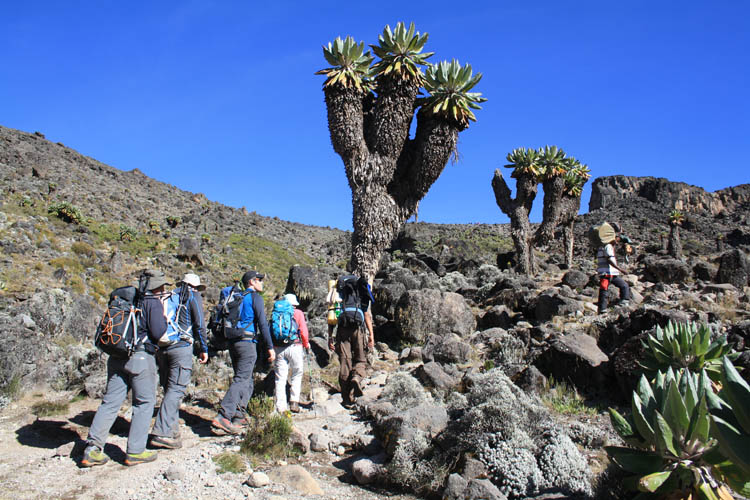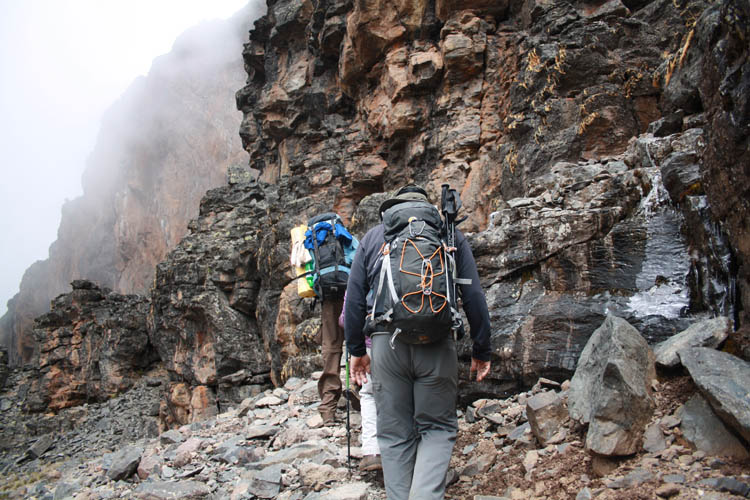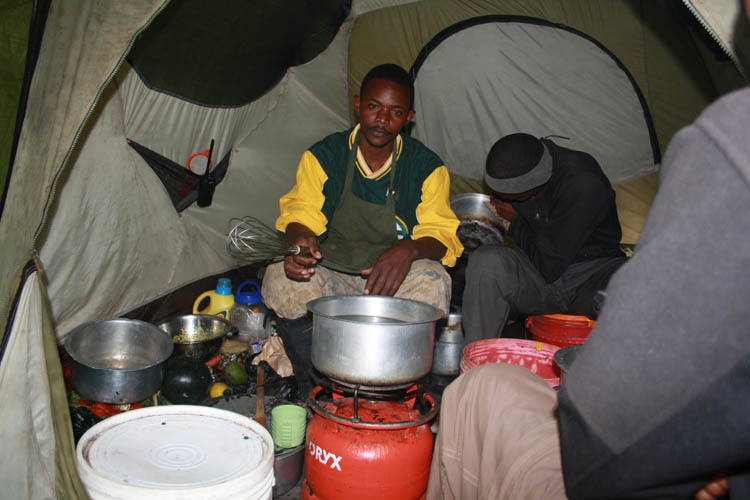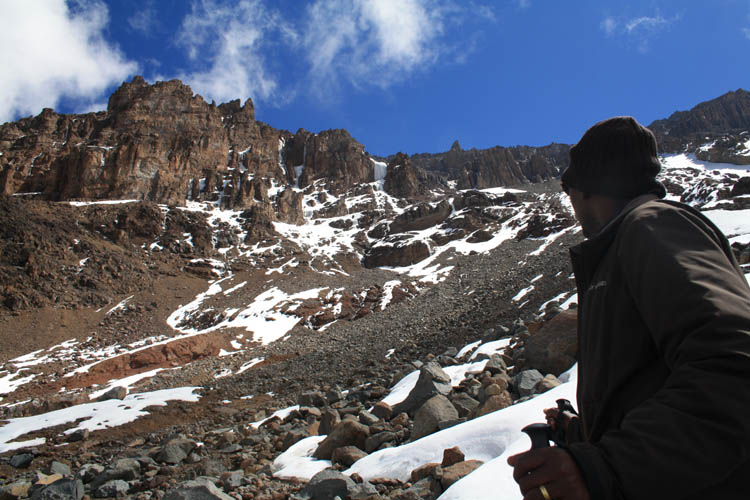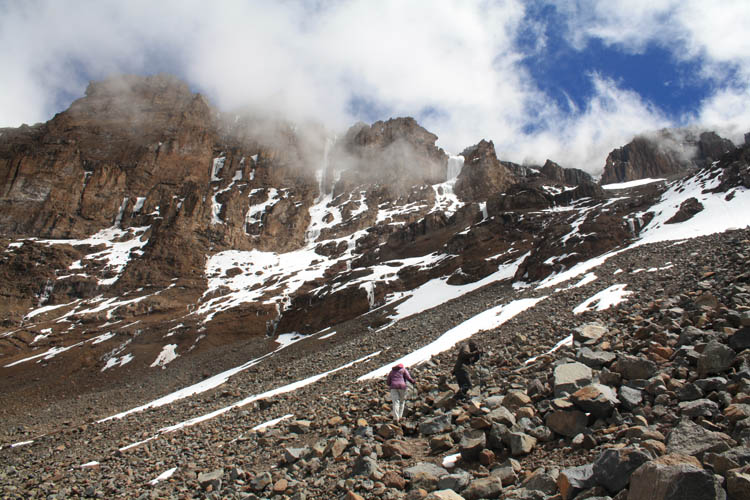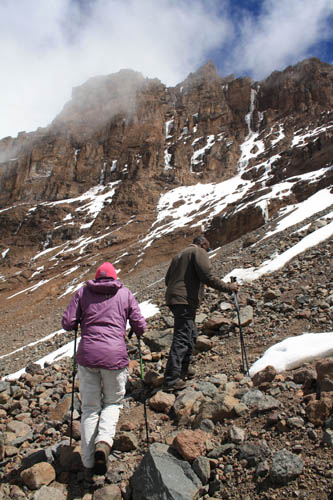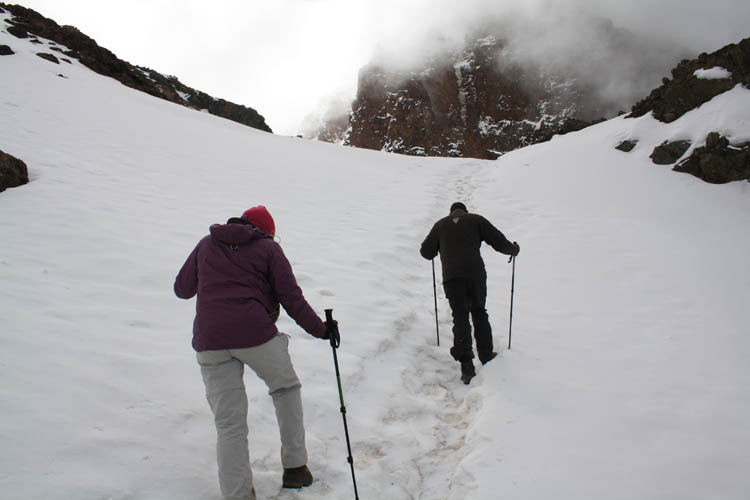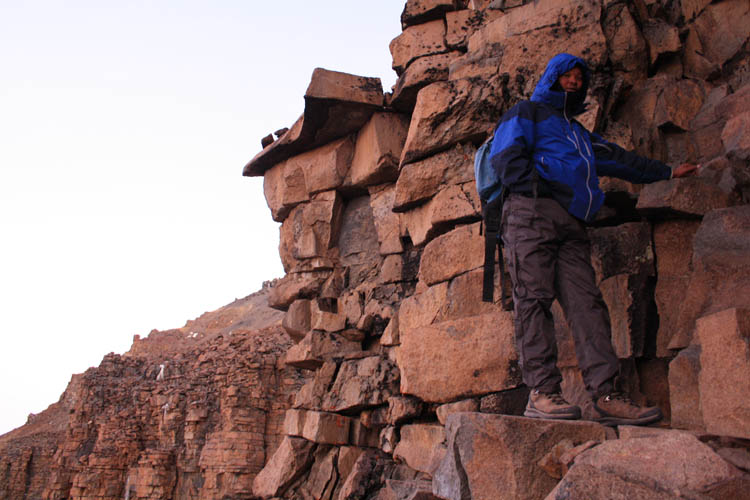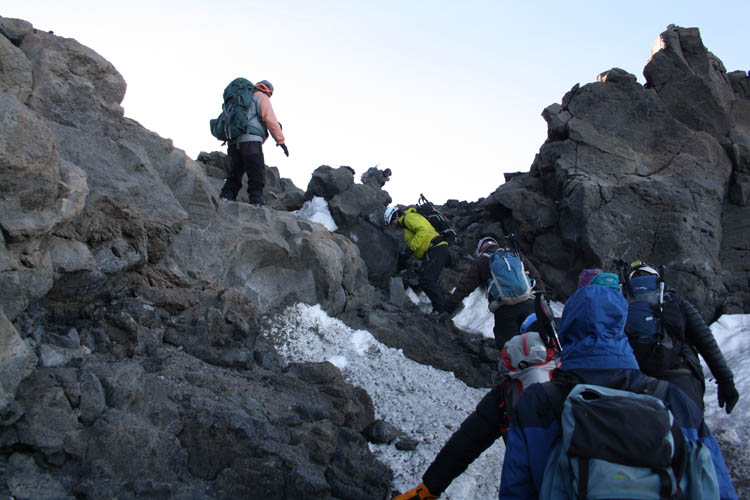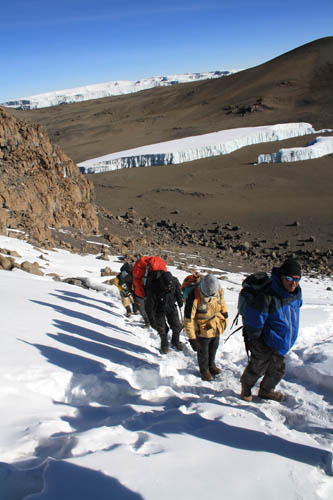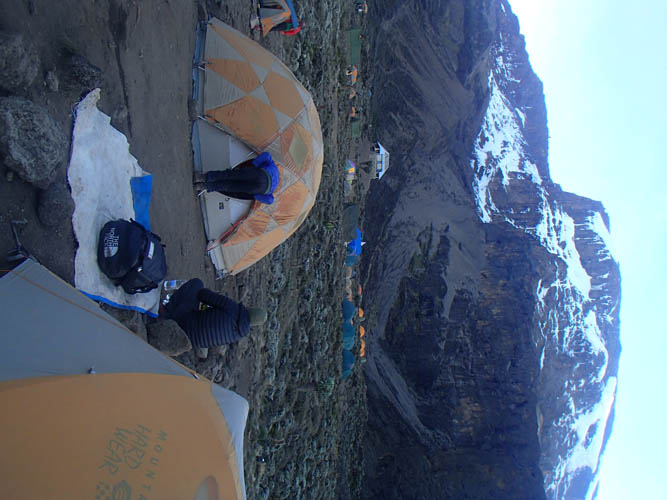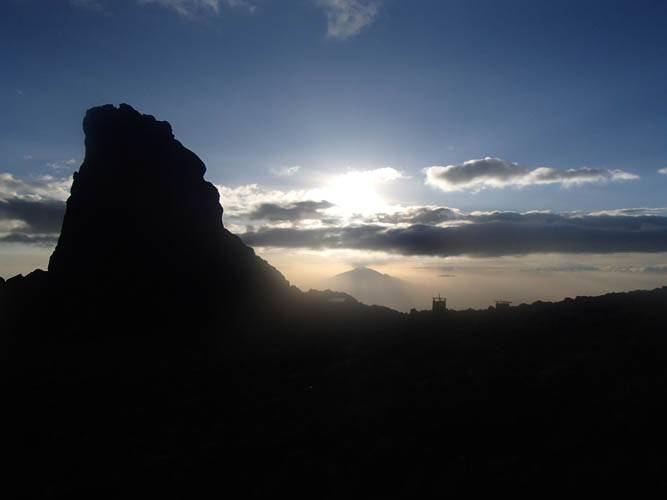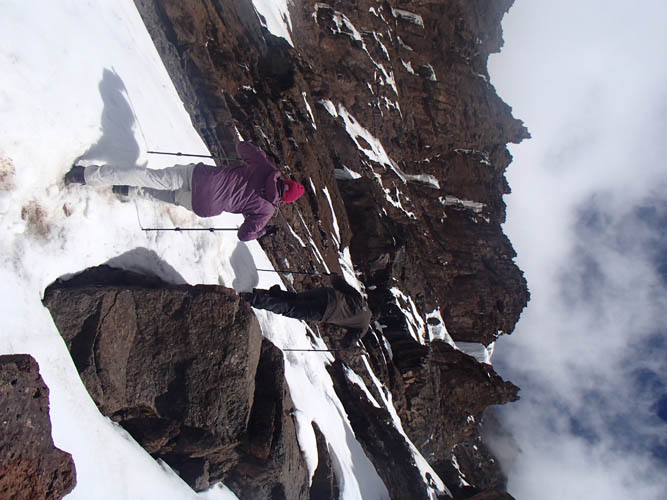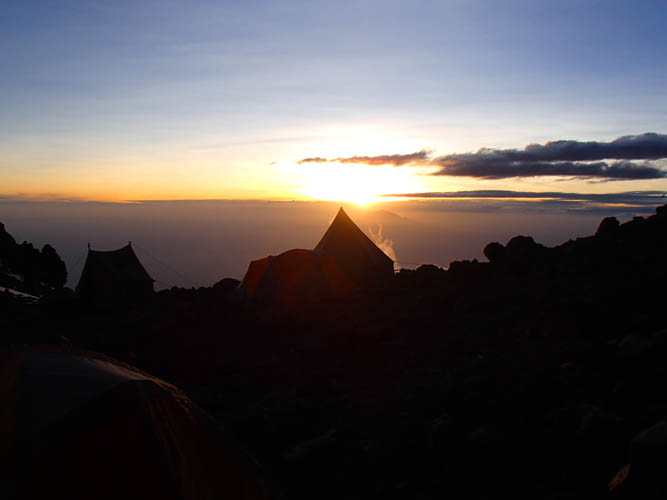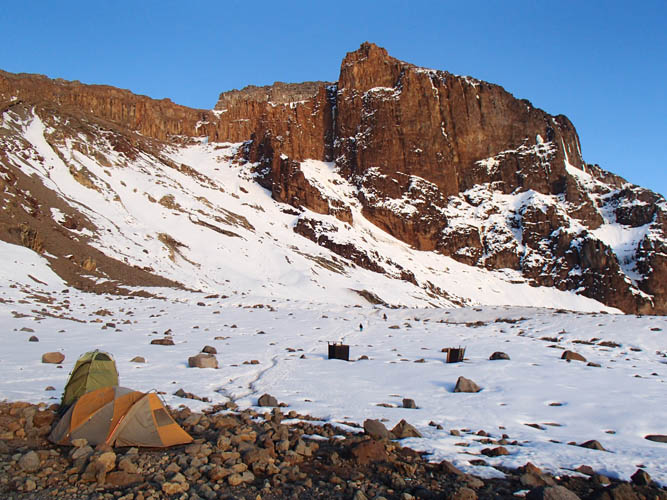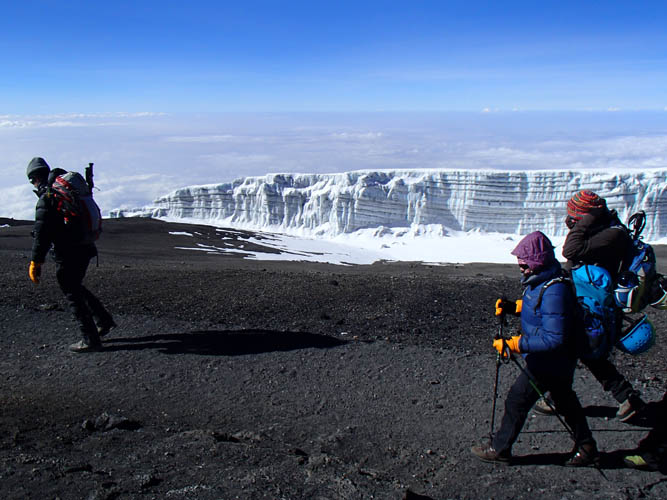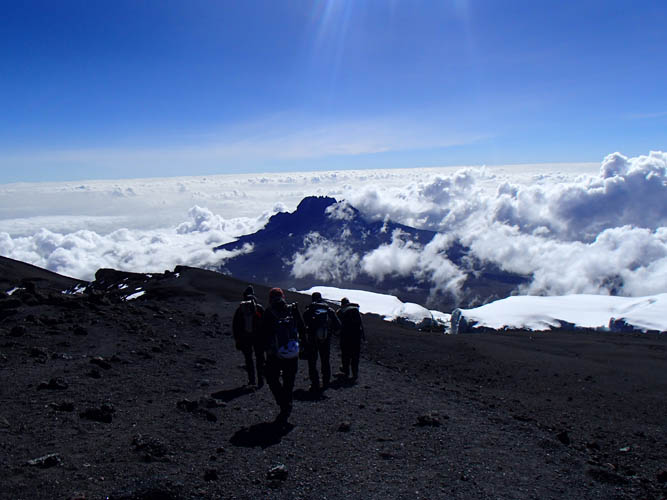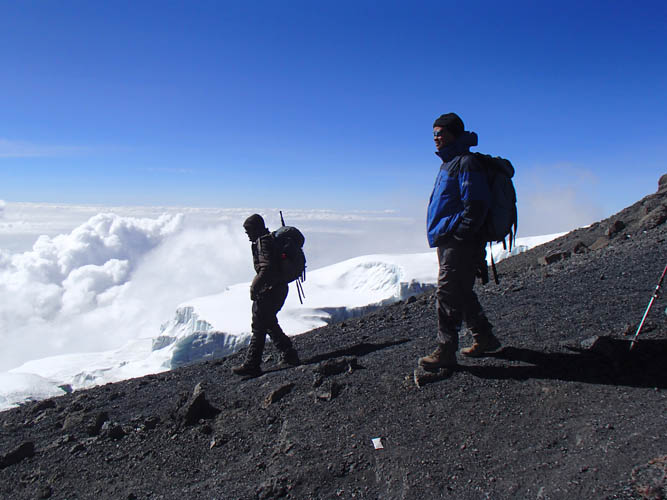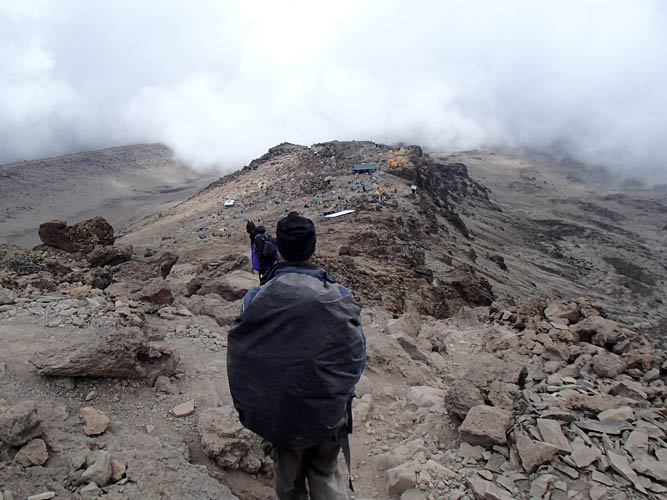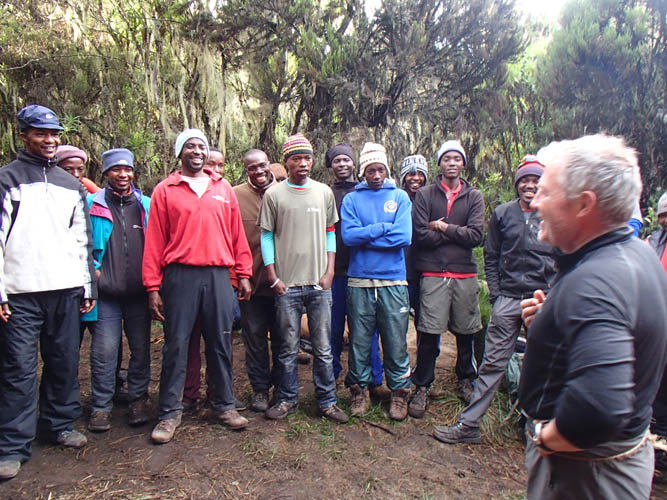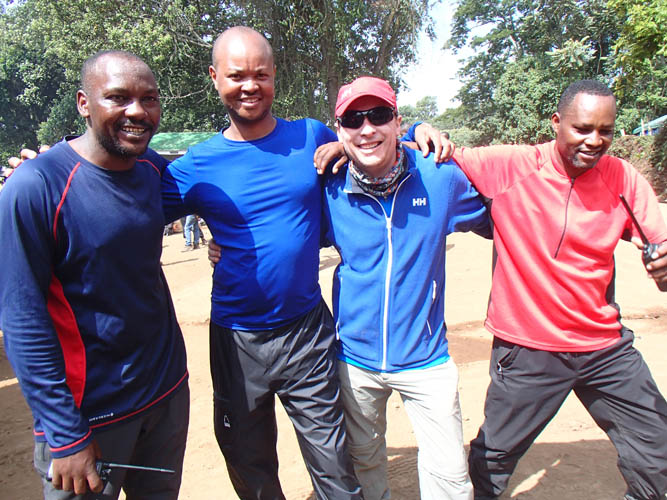The highest peak in Africa and one of the Seven Summits
Just why is Kili so popular, and one of the first names on the ‘to do’ lists of trekkers all around the world? Well, it’s one of the Seven Summits for a start, so a successful climb up Kili means you ‘only’ have six other (admittedly some infinitely more serious) peaks to climb to complete your collection. Then there’s the romance and history of the mountain, from Hemingway’s Snows Of Kilimanjaro to Messner’s Breach Wall Direct route which he described as one of the most dangerous climbs he’d ever done. But its the position and size of the mountain that is perhaps the most alluring reason to climb Kili. Rising up from the plains of eastern Africa, the largest free-standing mountain in the world makes for a jaw-dropping sight from afar – and the view from the top isn’t bad either. When you top out as the sun rises in the distance, you truly feel on the ‘roof of Africa’ with the endless views disappearing across the plains in every direction. Make no mistake, though Kili may not be a technical climb in mountaineering terms, the feeling you get when standing on its summit is one of the best mountain experiences you can have.
The most popular route on Kili is the Machame, and not without good reason. It’s possible to climb via the Machame in either six or seven days and it’s definitely worth paying extra for the seven-day version. The extra day usually breaks the potentially very long walk from Barranco Camp to Barafu. It chops the day in half by stopping at Karanga Camp, which is beautiful, and saves a lot of energy. Arriving at Barafu tired after an eight-hour walk isn’t ideal. Marangu is also very popular, probably because it’s the cheapest and therefore quickest means of ascent/descent. I haven’t climbed it and nor would I want to. My favourite is the Lemosho route, which is the most popular amongst our teams. It makes a gradual rising traverse of the mountain, starting on a very quiet and more remote path which snakes through the lower forests. If you walk quietly you can often see monkeys in the canopy, something unheard of on the busier routes. We spend eight days on the route, which converges with the Machame on the fourth day, and because of the gradual acclimatisation profile, the success rates are excellent.
‘Kilimanjaro the Hard Way’, Chris Kempster (Issue 37, Mar 2013)
‘Kili Quest’, by Rhys Jones (Issue 25, Feb 2012)
‘Choose your Kili’, by Henry Stedman (Issue 4, May 2010)
When to go
Due to its proximity to the Equator, the seasons on Kili are very long. The only times worth avoiding are April/May (short rains) and November (long rains). As the name suggests, it can rain a lot – if not constantly –at those times. Sadly, it can rain any time of the year and as is the nature of mountain weather, it can change frequently.
Food
Food is an important part of the trip, too, and the menu varies a lot from one company to another. Some teams have their cook crew set up and prepare a hot lunch mid route during their day. I prefer not to do this as it breaks the rhythm of the walking. The food can be really great, and a typical example of the daily menu might be… Breakfast: fresh fruit, porridge, toast, jams, omelette and sausages. Lunch: either packed lunch or cooked lunch, like soup, chicken and chips and fresh fruit. Dinner is three courses too, always starting with soup which helps with hydration and tastes more exciting than water. The main course might be spaghetti bolognese, and for dessert more fruit. It’s definitely worth taking some small snacks for summit day. Despite any company’s best efforts, it might be the case that you love Jelly Babies, in which case you should take some. It makes a huge difference to morale and energy if you can snack on the way up.
Acclimatisation
The best thing you can do to acclimatise is to go slowly. An eight-day climb will have a very significantly higher success rate than a five or six-day route. The cost of a longer climb will always be higher. For most people climbing Kilimanjaro, it will be a once in a lifetime experience so booking onto the cheapest trip will most likely be less enjoyable because you’ll be less acclimatised, more tired and other corners may have been cut to deliver a bargain price.
Diamox
It’s unusual to get up and down Kili without someone at least mentioning Diamox. Diamox (generic name acetazolamide) is used in general medicine to reduce the pressure in the eye. However it has gained a place in altitude medicine due to its ability to fast forward acclimatisation. It is used both to prevent acute mountain sickness (AMS) and to treat it. It does this by altering the balance of alkali to acid in the blood by increasing the excretion of alkali in the urine. The more acidic the blood is, the faster and deeper you breathe, which is, of course, what you need at altitude. The body will do this in its own time without the help of Diamox, but this natural acclimatisation tends to happen rather too slowly to keep up with the rapid ascent required on Kilimanjaro. Most people will have at least a headache at some point during the trip.
So to Diamox or not? Advantages clearly include the potential to ascend more comfortably and more enjoyably than would be otherwise be expected, due to a reduction in symptoms of AMS. In theory you could get more for your money, and are more likely to summit. But one can rarely tell how effective it is in an individual, since everyone is different. Someone taking Diamox may even have more or less the same experience off it. There are of course the side effects to consider, which, although usually mild, can be annoying. The main one to consider is increased urination which is far from fun in the middle of the night on a mountain, and disturbs much needed sleep. This in turn increases the potential for dehydration, again a ‘no no’ at altitude. Some medics have worried about this, particularly in people with other health problems. Other side effects include tingling of the hands, feet or around the mouth, and changes in taste – fizzy drinks can seem flat, for example. Then there are the purists that believe that on Diamox you were ‘helped’ up the mountain.
The bottom line is that if you are considering using Diamox, discuss it with your GP first and always try it out for a couple of days at sea level before you go on your trip, to see how the side effects really affect you.
Who to go with
There are literally hundreds of local and international companies operating on Kilimanjaro, but we would recommend a reputable UK-based company that pays its local stuff proper wages and allows enough time on the mountain for clients to acclimatise properly. These include the likes of World Expeditions, Jagged Globe and Adventure Alternative.
